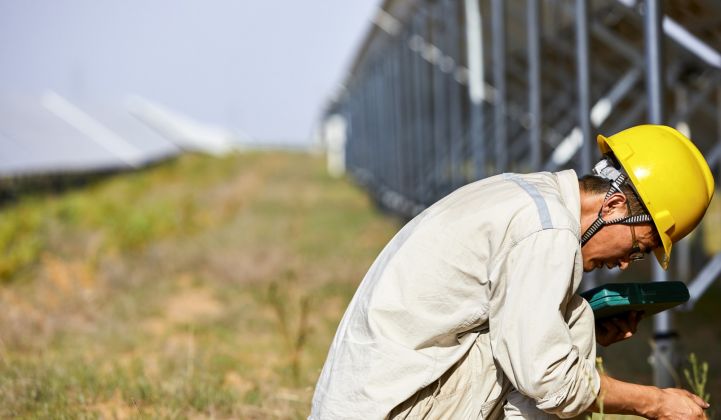New data from Bloomberg New Energy Finance shows a 19 percent reduction in solar financing in the first half of 2018, compared to the same period last year.
Continued declines in project costs, along with a policy shakeup in China, drove the drop. BNEF expects the ramifications from both to build in the second half of the year.
But where investment in solar faltered, other clean energy technologies made up the difference. Wind saw a particularly sharp 33 percent increase in investment over the first half of 2017, rising to a total of $57.2 billion. While lower relative to previous years, solar investments still outperformed wind so far this year at $71.6 billion.
Overall, clean energy investment dropped just 1 percent and totaled $138.2 billion in the first half of 2018.
China, the globe’s No. 1 investor in clean energy, contributed to much of the drop in solar investment. The country’s solar funding fell 29 percent between the first half of 2017 and the first half of 2018.
In June, the government announced it would not approve any more subsidized utility-scale PV projects in 2018. The change, effective immediately, means projects connected past June 1 will not receive any feed-in tariffs from the government, constricting growth in a country that’s become the world's leader.
The changes will lead to a precipitous drop in demand and a condition of module oversupply, feeding a further downward price spiral.
GTM Research expects Chinese PV demand to drop this year to 28.8 gigawatts from a past projection of 48.2 gigawatts. Between 2018 and 2022, demand will fall to 141 gigawatts from the previous projection of 206 gigawatts. It's a significant contrast to last year, in which BNEF notes China set a "spectacular" record by installing 53 gigawatts.
Outside of China, the country's policy changes will push module prices lower than already expected. BNEF now projects a 34 percent decrease in module prices, to a global average of 24.4 cents per watt. GTM Research analysts are slightly more conservative, projecting a 31 percent drop from the fourth quarter of 2017 to a global average of 27 cents per watt in the fourth quarter of 2018.
The extreme shift in China also has analysts at BNEF suggesting that 2018 could be the year that global solar installations fall for the first time. The full impact of the policy change, announced just one month ago, won’t be clear until later in the year.
Looking ahead, GTM Research analysts expect there to be an upside to steadily falling module prices. After 2020 they’ll unlock additional global demand as solar edges closer to or achieves grid parity in some regions.
The countries most able to take advantage of the pricing changes are those where module prices make up a significant portion of a project’s capital expenditures. In India, where modules currently account for 57 percent of project cost, the price drops capex by 17 percent.
Meanwhile, spectacular investment growth in other sectors could outshine solar entirely.
In the U.S., for instance, investment in wind grew 121 percent between the first half of 2017 and the first half of 2018. Investment in the U.S. wind sector is expected to increase further as developers scramble to meet the federal Production Tax Credit deadline. In China, wind investment rose as well, although by a smaller 4 percent. Overall, wind investment in the two countries came out nearly equal: $17.5 billion in the U.S. and $17.6 billion in China.
Investment in “energy smart technologies,” a category that encompasses products such as battery storage and electric vehicles, grew 64 percent.




